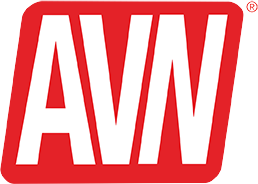The current presidential campaigns may have stepped up their cyberspace fundraising but it doesn’t mean they’re spending more on advertising online, according to a new study from the Pew Internet & American Life Project.
The Bush and Kerry campaigns spent over $100 on television to every $1 spent on Internet advertising, with Kerry spending $1.3 million on the Web compared to $419,000 for Bush, Pew said in a project data memo by senior research consultant Michael Cornfield.
The good news, according to Cornfield’s study: Whenever either campaign did spend on Internet ads, they avoided the kind of schoolyard scrum rhetoric that usually characterizes political debating in numerous Internet forums, message boards, and chat rooms devoted to politics.
“Although parts of the online world are a public “wild West” where few standards of taste, civility, and accuracy prevail, political advertising on the internet has adhered to mass media standards of political discourse,” he wrote. “Content analysis of the 137 ads in the collection by the Bush, [Democratic National Committee], Kerry, and [Republican National Committee] campaigns pre-conventions shows that although a few ads took remarks out of context, none descended to obscenity, graphic violence, or manifest smears and lies.”
He said more than half the ad designs analyzed for the study either praised the candidate for whose benefit they were done or merely found a candidate contrast and finished on an upbeat note.
Cornfield said his research shows that, to this point, with the election a little over a month away, the Bush and Kerry campaigns and the major players attached to them see the Internet as a fundraising and voter-profiling asset but not an asset for advertising advantage. In fact, Cornfield said, those few Net ads running between January and August mostly asked for campaign contributions of between $25 and $50 apiece.
Cornfield’s report indicated the Democratic National Committee increased online ad spending since July at $257,000 but was still somewhat behind the Republican National Committee’s $487,000. Concurrently, the so-called 527 groups – the advocacy groups that have provoked the ire of both President Bush and Sen. John F. Kerry (D-Massachusetts) at different junctures in the campaign – have done extremely little online advertising. That despite one of the most visible such groups being MoveOn.org, a pro-Kerry group, and the other being the anti-Kerry Swift Boat Veterans for Truth, the latter receiving as much Internet as mainstream media attention.
The Bush campaign’s largest Internet advertising push, Cornfield reported, was in May, when the campaign spent $403,000 of $409,000 total spending in an Internet ad blitz targeting middle-class women and voters in several reputed battleground states. The Kerry campaign’s largest Net ad push, concurrently, was believed to be progressive pockets in large metropolitan areas. Where they found common ground, Cornfield said, was that both campaigns in such pushes favored local to national or world media outlets and the Websites of old media properties over new online-oriented companies.
Still, there have been those who expected the Internet’s “unfiltered and unregulated status” to trigger a rash of “underhanded attacks” by way of Web advertising, Cornfield observed, noting a bill sponsored by U.S. Sens. Lindsay Graham (R-South Carolina) and Ron Wyden (D-Oregon) to force Internet advertising to apply the so-called “stand by your ad” disclaimer requirement.
“Despite those concerns, the online ads to date were no better or worse than those in other high-visibility media,” Cornfield said. “There were no glaring falsehoods or really low blows,” even if the Bush campaign designed more negative than positive ads. One of the positive ads the Bush campaign did produce – a banner with First Lady Laura Bush and a “special message” link to a video – actually accounted for 98 percent of the campaign’s Web ad placements, Cornfield said.
A content analysis done for the new study showed the Kerry campaign far outpaced the Bush campaign for positive ads (60 percent to 14 percent) and fell far short in negative ads (40 percent to 86 percent), while their parties’ national committees showed a smaller division between the two. Both committees ran considerably more positive than negative ads when they did advertise online, the Republicans 57 percent positive to 43 percent negative and the Democrats 52 percent positive to 48 percent negative.
But Cornfield questioned aloud why the campaigns haven’t ventured more aggressively into Internet advertising while ramping up their Internet fundraising and voter profiling. “[O]nline ads can reach new, undecided, and wavering voters in the demographic and geographic niches where they are thought to reside,” he said. “Online ads would seem to provide a missing link between the campaigns’ existing Internet efforts and tens of millions of Americans.”









